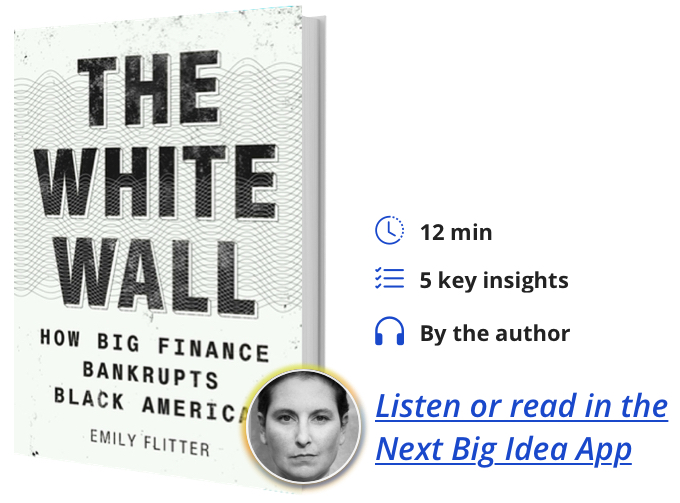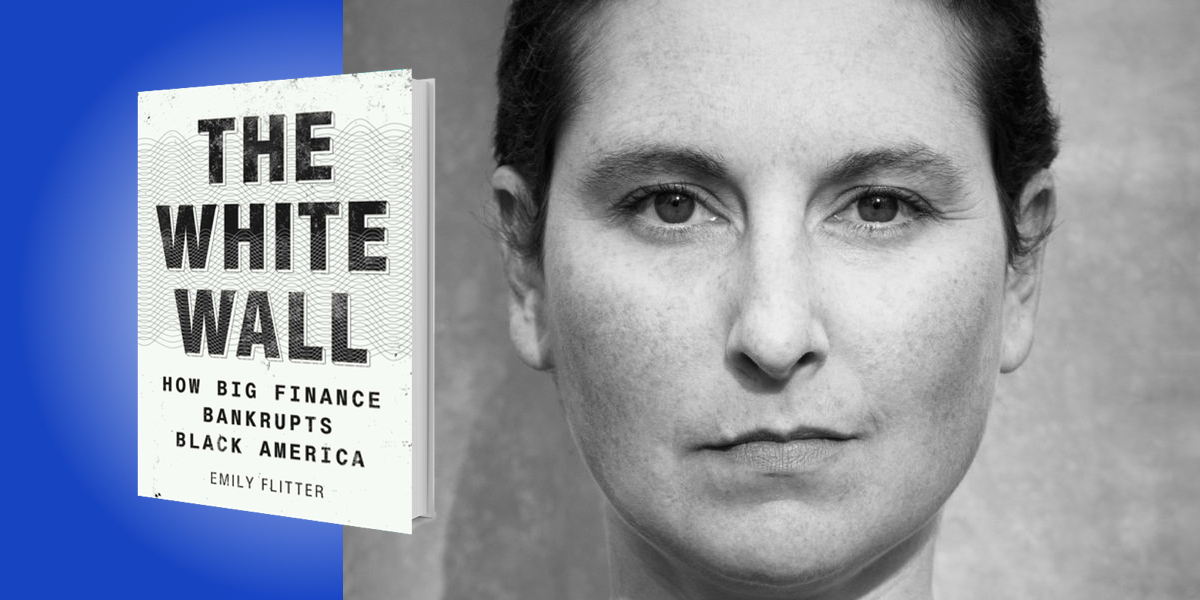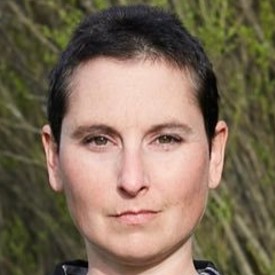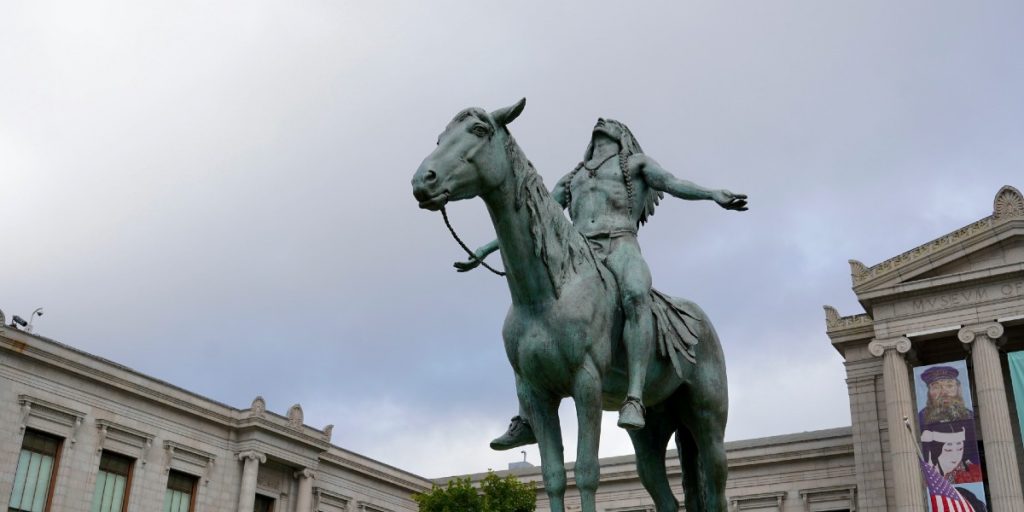Emily Flitter covers banking and Wall Street for the New York Times. She holds an MA in Near Eastern studies and journalism from New York University and a BA from Wellesley College.
Below, Emily shares 5 key insights from her new book, The White Wall: How Big Finance Bankrupts Black America. Listen to the audio version—read by Emily herself—in the Next Big Idea App.

1. Banks racially profile customers.
When customers first walk into banks and tellers see them, they look at their skin and hair and how they’re dressed, and then they assess their trustworthiness. I don’t just think this happens at banks. I know it does.
A concerned source leaked me emails from JPMorgan Chase tellers warning each other to avoid certain customers. Some of the emails described obvious bad behavior, like a customer coming in with a card that’s been reported stolen or presenting an ID that is proven to be a fake. But other emails sounded like this: African American man tried to cash a check from a business in Texas. Or, An account was opened for a tall African American male with dreadlocks and facial hair. After fraud was called, the account was restricted. Here is a copy of the payroll check.
Can you spot the bad behavior in these examples? I can’t. Another email I saw described a Black man who came to cash a check, but the tellers didn’t believe it was issued to him. He got upset and left the branch, and after he was gone the tellers called the people who issued the check, and they confirmed it had been issued to the man. The tellers described him as a very young African American male with blond dreds.
That’s just the beginning of what happens to Black bank customers. Mystery shopper studies have shown that Black bank customers get offered fewer services and are sometimes discouraged from applying for loans. This posed a particular problem in the early days of the Covid-19 pandemic when the federal government gave banks the job of distributing small business aid money in the form of forgivable loans. Black business owners really struggled to get them. Some didn’t make it.
2. HR doesn’t help.
When employees of big financial institutions experience discrimination, they are told they should report it to human resources and get help. But when I looked into what really happens when they do report these cases, I found that more often than not things end up going very wrong.
“Big companies are so worried about legal liability that most discrimination investigations turn out to be a hunt for evidence that can be used against the bank—and for ways to make sure none of it ever sees the light of day.”
Take Kayode Odeleye, a managing director at the big international bank Standard Chartered. He had a huge job overseeing corporate finance in Nigeria. Basically, he helped companies there raise money. But a new boss came in and started moving people around, and slowly Kayode and his colleagues realized that this boss was pushing all the Black people out of Standard Chartered’s Africa business. Which was insane. Kayode complained, but Standard Chartered didn’t stop his boss from continuing to make his life miserable. He eventually wrote to the CEO of the bank, Bill Winters, who wrote back an embarrassing note that smushed Kayode’s first and last names together—Kayodeodeleye—and assured him that Standard Chartered had a zero-tolerance policy for racism.
Kayode left the bank.
These zero tolerance policies protect banks when employees try to bring legal cases against them. In fact, big companies are so worried about legal liability that most discrimination investigations turn out to be a hunt for evidence that can be used against the bank—and for ways to make sure none of it ever sees the light of day. But if Black employees can’t advance in their careers, they can’t build wealth. They can’t pass wealth on to their children. They’re stuck.
3. The insurance industry is massively discriminatory.
The insurance industry judges property values by neighborhood quality, so houses in “bad” neighborhoods don’t get the same kind of policies houses in “good” neighborhoods get. But that’s just the beginning. I found loads of Black property owners who couldn’t get insurers to make good on their legitimate claims. Like Althea Hawthorne, a retired postal worker in Dallas who had lived in her home for nearly 30 years. No mortgage, no drama, just a peaceful retirement. Until a hailstorm punched holes in her roof and she asked State Farm to pay to repair the damage.
Althea told me what it was like when a State Farm agent came to verify her claim. She said he acted like he was doing her a big favor by being there at all. He poo-poohed the contractor she had found, who had estimated the cost of repairs around $10,000. He offered her $250. That’s it.
“Insurers have a trick where they force claimants they don’t like to sit for depositions and swear under oath that things really happened the way they say they did.”
Often, Black customers are accused of committing fraud when they try to file insurance claims. Insurers have a trick where they force claimants they don’t like to sit for depositions and swear under oath that things really happened the way they say they did. One lawyer told me about a Black couple who were deposed because an insurance adjuster didn’t believe they had really bought their sheets and towels from the luxury department store Neiman Marcus.
4. Data is not the great equalizer.
Banks and non-banks are using data more and more often to help them make decisions about which customers to advertise to and how much money to lend them. But when you look at this data, you realize it’s made up of the past activities that have gone on in the financial system.
Remember redlining? Those maps of cities that banks and municipal authorities shared with each other so they could be on the same page about whom to provide services to and whom to shun? All that comes back to haunt Black borrowers in the form of lower credit scores, lower home values, and far less generational wealth.
Feed that into an algorithm and you get out what you put in: racism.
5. Beware of corporate gaslighting.
All those big promises to fix racial inequality by pledging billions of dollars. For what? I looked into one of those racial equity pledges—JPMorgan’s—and I found that most of the $30 billion the bank said it was going to use to fix racial inequality was actually just really lucrative business, like loans to big developers for which the bank gets an affordable housing tax credit.
“The more these companies try to speak themselves into virtuousness, the more they drown out the voices of people trying to speak the truth.”
“Well, why not?” you could say. “Isn’t it still better than nothing, even if only $2 billion is actual charity?”
The problem is that people see these pledges and think they’re real, and then they wonder why there’s still a problem. If corporate America is so on it, it can’t be corporate America’s fault anymore, right?
Wrong. The more these companies try to speak themselves into virtuousness, the more they drown out the voices of people trying to speak the truth. And those truthtellers have a lot less power and money than the big banks. If these banks really wanted to do better, they could leave off making pledges with dollar values and time limits and just admit what they’re doing wrong—and actually do better.
The white wall has been right in front of you this whole time, but I bet if you’re not Black you hadn’t noticed. If you don’t have to live these truths, you can walk away from them. But they won’t go away, and they won’t get any better unless everyone faces them together.
To listen to the audio version read by author Emily Flitter, download the Next Big Idea App today:































